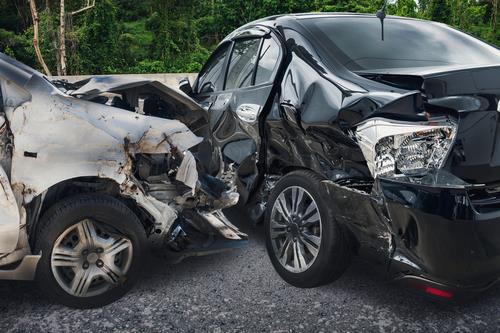
Seat Belt Did Not Work In A Car Accident– Who Is At Fault?
Seat Belt Malfunction in a Car Accident: Who is Liable?
In Missouri, strict seat belt laws require all front-seat passengers to wear seat belts at all times. Additionally, passengers aged 8 to 15 must wear seat belts regardless of their seating position. Failing to comply with these laws can result in traffic tickets. However, what happens if your seat belt fails to function properly during a car accident? If you find yourself in this situation, understanding liability is crucial for pursuing compensation for your injuries.
Understanding Liability for Seat Belt Malfunctions
If your seat belt fails during an accident, both the vehicle manufacturer and the seat belt manufacturer could be held liable. Manufacturers are responsible for ensuring that their products undergo rigorous testing before being released to the public. This includes safety tests that evaluate the performance of seat belts in crash scenarios. Despite these precautions, defects may still occur, leading to potential liability for injuries sustained in an accident.
Types of Damages You Can Claim
In cases of seat belt failure, you may be eligible to pursue compensatory damages for medical expenses, hospital bills, and other losses related to the incident. Additionally, punitive damages may be sought to penalize manufacturers for producing faulty products and to deter future negligence.
The Legal Process for Seat Belt Malfunction Claims
Steps to Take After an Accident
If you experience a seat belt malfunction during a car accident, taking the right steps immediately following the incident can significantly impact your ability to file a successful claim. Here’s what you should do:
- Seek Medical Attention: Your health is the top priority. Even if injuries seem minor, it’s essential to get evaluated by a medical professional. Documenting your injuries will also be crucial for any future claims.
- Document the Scene: Take photographs of the accident scene, including your vehicle, the position of the seat belts, and any visible injuries. This evidence can be vital in establishing liability.
- Collect Witness Information: If there are witnesses to the accident, gather their contact information. Their statements may provide additional support for your claim.
- Report the Incident: File a report with local law enforcement and notify your insurance company about the accident. Ensure that all details regarding the seat belt malfunction are included in these reports.
- Preserve Evidence: Keep the damaged seat belt and any other relevant vehicle parts as evidence. Do not attempt to repair or alter them before consulting with an attorney.
Filing a Product Liability Claim
If you believe that a defective seat belt contributed to your injuries, you may consider filing a product liability claim. Here’s how this process typically unfolds:
- Consult with a Personal Injury Attorney: An experienced lawyer can evaluate your case and help determine whether you have grounds for a product liability claim based on seat belt malfunction.
- Gather Evidence: Your attorney will assist in collecting necessary documentation, including medical records, accident reports, and evidence of the seat belt’s failure.
- Establish Liability: To succeed in a product liability claim, you must prove that the seat belt was defective and that this defect directly caused your injuries.
- Negotiate with Insurance Companies: Your attorney will handle negotiations with insurance companies on your behalf to seek fair compensation for your injuries and damages.
- Litigation (if necessary): If negotiations do not lead to a satisfactory settlement, your attorney may recommend filing a lawsuit against the responsible parties.
When Do Seat Belts Malfunction?
The responsibility for ensuring that seat belts are properly installed and functioning lies with automobile manufacturers. If a malfunction occurs during an accident, you may have grounds for a product liability claim. Common causes of seat belt malfunctions include:
- Manufacturing Defects: Errors during production can lead to weak spots or faulty mechanisms in the seatbelt system.
- Wear and Tear: Over time, seat belts can degrade due to age and usage, resulting in frayed webbing or loose components.
- Improper Installation: Incorrect installation or repairs can prevent a seatbelt from functioning correctly during a crash.
- Design Flaws: Some seatbelt models may have inherent design issues that lead to malfunctions.
Specific Types of Seat Belt Malfunctions
- Latch Failure: The buckle may not secure properly or could become unlatched during a collision.
- Retractor Failure: The retractor mechanism might malfunction, allowing excessive slack in the belt.
- Webbing Tears: The webbing can tear under extreme pressure, compromising its ability to restrain you effectively.
Tips for Preventing Seat Belt Malfunctions
To minimize the risk of seat belt failures, consider the following tips:
- Wear Your Seat Belt Properly: Ensure it fits snugly across your hips and chest.
- Inspect Regularly: Check your seat belts for signs of wear, such as fraying or tears.
- Professional Maintenance: Have your seat belts inspected by qualified mechanics during routine maintenance.
- Stay Informed About Recalls: Regularly check the National Highway Traffic Safety Administration (NHTSA) website for information on any recalls affecting your vehicle’s seat belts.
Seeking Legal Help After a Seat Belt Malfunction
If you have suffered injuries due to a malfunctioning seat belt in Missouri, it is essential to consult with an experienced personal injury attorney. They can help you identify potentially liable parties and guide you through the process of filing a claim.
Conclusion
Understanding who is liable when a seat belt fails during an accident is crucial for securing compensation for your injuries. Whether due to manufacturing defects, improper installation, or design flaws, holding the responsible parties accountable can help ensure that you receive the damages you deserve. If you’ve been affected by a seat belt malfunction, don’t hesitate to seek legal assistance to navigate this complex situation effectively.
